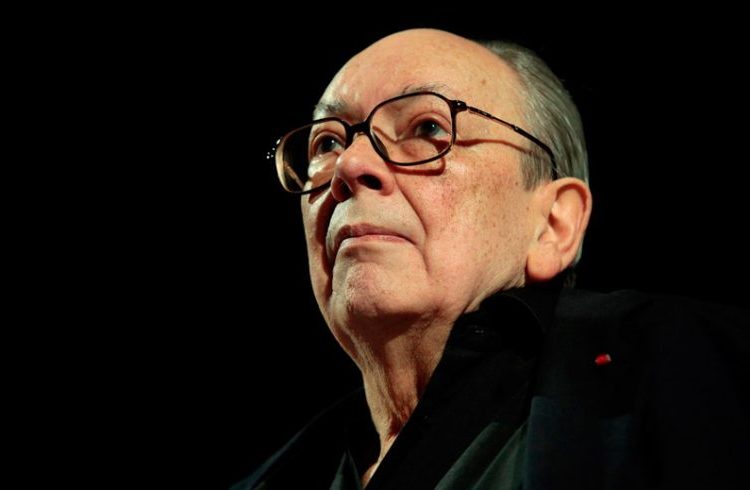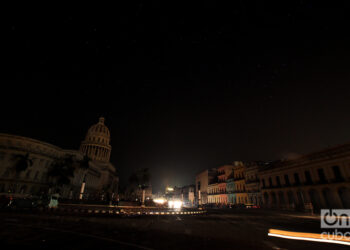Alfredo Guevara pointed to that piece of furniture, an avant-garde armchair, too low for him to sit on at the height of his already 80 years, and he said: “one day Leo Brouwer called me to tell me those furniture were being sold in the Ten Cent store and I ran out to buy them.” That day was one in the 1960s, they were Knoll furniture and, after the 2000s they remained in the offices of the International New Latin American Film Festival in Havana.
The love for Knoll furniture could seem contradictory to Guevara’s well-known veneration for baroque and colonial furniture. While looking at the armchair, its defense of the Knoll aesthetics dates back to the origin of Russian conventionality and German rationalism, and to the context of Stalinism and fascism.
Guevara had studied in depth the Russian avant-garde movement from before Stalinism and considered it the seed, together with the Bauhaus, of almost all the western avant-garde. He always regretted that, in the Russian case, that avant-garde had been lost due to the “Stalinist blindness, a blindness that got to be criminal.” (Or, in the German case, Nazism.) Based on that understanding, he used to say: “I can’t stand Los fundamentos del socialismo en Cuba [The Fundamentals of Socialism in Cuba], by Blas Roca,” and questioned the “Marxism-Leninism” drawn up by Stalinism about Marxism which was “neither Marxist nor Leninist.”
There are those who will see one “more sign” of Guevara’s “elitism” in his love of Knoll furniture, “while the Cuban people were going through so many shortages.” Neither Guevara nor the Cuban revolution are saints. The scarce presence of women filmmakers, and of a gender-based focus, in Cuban cinema produced by the institution that he headed (the Cuban Institute of Cinema Arts and Industry – ICAIC), as well as its conflicts with the cinema of black filmmakers, like Nicolás Guillén Landrián, are not the most brilliant pages of his biography.
However we can take his explanation about the Knoll as another lesson. No one like Leo Brouwer himself could give it a better title: “Tradition is broken, but to do so is difficult.” That difficulty supposed in Guevara a commitment with a universalist conception of culture, a task of making visible and recognition of the exclusions perpetrated by the hegemonic uses of universalism, an intellectual formation as rigorous as critical, and a direct vocation for justice.
During his time as a university student Guevara devoted a complete summer holiday to reading Jorge Mañach, with premeditated attention to detail, and to being informed about what he read. He would soon have as a professor the author of La crisis de la alta cultura, whom he admired as an intellectual but whose political positions he challenged. His confessed objective was to constantly ask things “to make life unbearable for him.” Guevara obviously knew about Mañach’s biography as minister in the Caffery/Mendieta/Batista government, and the role played by the ABC in the Mediation, but, in the university sphere, he considered it more important to really read him and question his theses, appropriating, from the intellectual viewpoint, the anti-elitist criticism of the conception of the society of masses of Ortega y Gasset, whose most outstanding disciple in Cuba was Mañach himself.
Guevara did something different with Fernando Ortiz, who at that time (second half of the 1940s) was the most outstanding Cuban intellectual, with a global influence, although without an official university chair. Guevara would finish his classes and would go with two or three friends – among them Mario García Inchausti, as he would do later with Tomás Gutiérrez Alea and Lisandro Otero – to knock “with great nerve” on Ortiz’ door to sit in his rocking chairs and have endless conversations about “Afro-Cuban” culture.
It was a second university for Guevara and that related group “of small bourgeois boys.” Through Ortiz they became friends with an outstanding Havana Santeria priest and they went “to absolutely all the drum-beating Santeria parties.” Guevara had had his first political socialization in anarchist and socialist circles with a great black presence – and specifically black Abakuas – from the port of Havana, and he had later created in the University of Havana a student committee against racial discrimination.
At present, in Cuba Fernando Ortiz has been “canonized” in a certain way and the place his work on “Cuban identity” as a specific discourse of a progressive sector of those years’ democratic liberal Cuban bourgeoisie has been depoliticized – that is, it is not politically understood. (His argument is almost never studied as a debate built in the face of other positions – among them: Marxists, communists and non-communists.) However, Guevara was able to take from Ortiz’ work something that is still fundamental until today: the image of the “ajiaco” (a stew and also referring to a melting pot) recognized the injustice committed against those who entered by force as slaves the national pot and expressed an effort whose key is retaken in our days by the criticism of the nationalisms conceived as merely “ethnic.”
Guevara’s admiration for Sergio Vitier translates his argument. The principal virtue of the guitarist and composer lies in his “iconoclasm based on rigor.” Sergio was the “man of all the ruptures and of all the achievements” not just because of his very particular insertion – lively and conscious – into the “black” world (his interpretations with Rogelio Martínez Furé, for example, are extraordinary) but rather because of the formation he received from José Ardévol who, in turn, had been the founder in Cuba of the musical neoclassicism, as a way of inserting national music into universal musical tradition through a “modern eclecticism.”
Based on that, when Guevara and Sergio Vitier thought of how to musicalize the union of Alicia Alonso’s classical ballet with Antonio Gades’ flamenco dance they understood that it was not a question of a counterpointing (said thus, in Ortiz’s style) of dances but of the counterpointing of culture. Vitier made Tata Güines, the greatest Cuban percussionist after “drummer” Chano Pozo, enter accompanied by his guitar. For Guevara, that piece, Son ad libitum, would be “an unforgettable moment for culture.”
The same foundation for the argument can be seen in the appropriation – so dear to Guevara – that Humberto Solás made of Alejo Carpentier’s novel Explosion in a Cathedral, with music by José María Vitier, about which similar things can be said. Or of Guevara’s reticence with respect to the professional, specialized, formation of filmmakers in film schools, since for him a filmmaker should be, first of all, a humanist. Or about his conception of the Film Festival as a space for regional cinema, and also as a marketplace for Latin American music, visual arts, social thinking and the politics of resistance, since cinema is culture and culture is also politics. It is known that Guevara appreciated Ernesto Lecuona’s music, but another of his lucidities is less known, like when he said: Benny Moré’s greatest contribution to Cuban culture lies, of course, in his music, and in more specific questions like the creation of the type of band he imagined, but also, and perhaps above all, in having sung to Cuba’s cities in times of great penetration of U.S. music in the country. What Mañach, Ortiz, Lezama or Carpentier did on the one hand, Benny did on the other. When he sang “Cienfuegos is the city I like the most,” or “Beloved Santa Isabel de las Lajas” it made millions of us, Guevara would say, love Cuba more, and to better understand it in the diversity of its geographical, social and human spaces.
This understanding, so political as well as informed, and therefore very sophisticated, is what made him admire a Knoll piece of furniture and to repudiate art as propaganda. In brief, the International New Latin American Film Festival will have its 39th edition in Havana. The current organizers of the Festival have already asked themselves in previous years if it is “new,” if it is “film” and if it is “Latin American.” They are realistic questions open to our times. However, perhaps they would not be queries alien to Guevara himself, who understood how a tradition is created, how difficult it is to break it, and how indispensable it is for making culture: “that necessary miracle so that everything that comes gets here and can be received without possible rendering, received from the hard diamond of what is ours.”
* In this text I have used materials belonging to Alfredo Guevara’ public archive, like the transcription of interviews and presentations for diverse media, as well as excerpts of his recorded participation for the documentary Identidad, by Lourdes de los Santos, about Sergio Vitier.










